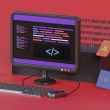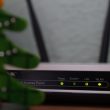As remote work becomes an integral part of modern business operations, secure and efficient access management has emerged as a top priority. Companies must ensure that employees working from home or on the go can seamlessly and safely access the systems, tools, and data they need, without compromising organizational security.
Managing access rights across a distributed workforce presents new complexities––especially with varying devices, time zones, and security environments. However, by adopting strategic tools and practices, businesses can streamline access management for remote employees while maintaining robust security policies.
1. Adopt a Centralized Identity and Access Management (IAM) System
A centralized Identity and Access Management (IAM) system is essential for controlling who has access to what resources within an organization. IAM systems provide a unified platform to manage user identities, roles, and permissions.
Benefits of IAM systems include:
- Centralized control over user credentials and roles
- Automated provisioning and deprovisioning of accounts
- Streamlined onboarding for new remote hires
- Audit trails to track user activity for compliance
Implementing such a system ensures consistent policies and simplifies administrative efforts across all user groups and platforms.
2. Utilize Single Sign-On (SSO) Solutions
One key way to simplify access while enhancing security is through Single Sign-On (SSO). SSO allows users to authenticate once and gain access to multiple applications and tools, reducing the need for multiple passwords.
SSO solutions offer critical benefits such as:
- Lowering the risk of password fatigue and related breaches
- Improving user experience by reducing login delays
- Centralizing authentication for better monitoring and control
Popular SSO solutions (like Okta, Azure Active Directory, or Google Workspace) support integrations with most business tools, making it easier to deploy and manage access rights uniformly across the organization.
3. Establish Role-Based Access Control (RBAC)
Role-Based Access Control (RBAC) simplifies permissions by assigning users only the access needed for their job function. This principle of “least privilege” minimizes exposure to sensitive data and reduces the likelihood of internal errors or breaches.
[ai-img]team roles, access control, office workers[/ai-img]Consider the following steps to implement effective RBAC:
- Define user roles and responsibilities clearly
- Map roles to necessary resources and applications
- Regularly audit and update role permissions
- Ensure exceptions are temporary and monitored
By structuring access based on job functions, businesses can manage user permissions more efficiently and with greater accountability.
4. Leverage Multi-Factor Authentication (MFA)
While passwords are the first line of defense, adding another layer with Multi-Factor Authentication (MFA) significantly strengthens security. MFA requires users to verify their identities using at least two forms of authentication, such as a password and a mobile verification code.
Key advantages of using MFA include:
- Reducing the risk of credential theft and unauthorized access
- Protecting data even when passwords are compromised
- Maintaining compliance with industry regulations and standards
Many IAM and SSO solutions already include MFA functionality, making integration with existing IT systems straightforward.
5. Automate Onboarding and Offboarding Procedures
With employees joining or leaving the company remotely, manual processes can introduce delays and errors. Automating onboarding and offboarding ensures that access rights are provisioned and revoked promptly.
Automation tools can help by:
- Assigning appropriate access rights as part of the onboarding workflow
- Automatically removing access from all systems once offboarding is initiated
- Maintaining audit logs to document lifecycle events around user access
This reduces administrative overhead, enhances the user experience, and significantly lowers security risks.
6. Monitor and Audit Access Patterns
Regular audits and real-time monitoring are essential to ensure compliance and detect unauthorized behaviors. Implementing advanced analytics, AI-based monitoring, and anomaly detection tools can help businesses maintain visibility into who is accessing what, when, and from where.
[ai-img]security monitoring, user behavior, audit logs[/ai-img]Some practical steps for ongoing access monitoring include:
- Reviewing access logs for irregularities
- Tracking login attempts from unusual locations or devices
- Generating automated alerts for suspicious activity
Continual review and improvement are critical to adapt to evolving cybersecurity threats and changing workforce dynamics.
Conclusion
As remote work continues to evolve, streamlining access management is not just a convenience—it’s a necessity. Businesses that invest in centralized IAM systems, implement robust security protocols like MFA and SSO, and embrace proactive monitoring strategies are better positioned to enable secure and efficient access for their remote workforce.
By fostering a culture of security and leveraging the right technologies, companies can maintain both productivity and protection, no matter where their employees are working from.






